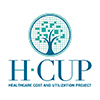National Healthcare Quality and Disparities Report
Latest available findings on quality of and access to health care
Data & Analytics
- Data Infographics
- Data Visualizations
- Data Tools
- Data Innovations
- All-Payer Claims Database
- Consumer Assessment of Healthcare Providers and Systems (CAHPS®) Program
- Healthcare Cost and Utilization Project (HCUP)
- Medical Expenditure Panel Survey (MEPS)
- National Healthcare Quality and Disparities Report Data Tools
- Network of Patient Safety Databases
- AHRQ Quality Indicator Tools for Data Analytics
- Surveys on Patient Safety Culture
- United States Health Information Knowledgebase (USHIK)
- Data Sources Available from AHRQ
Data Resources
Filter by Topic
- Access to Care (4)
- Adverse Events (1)
- Ambulatory (2)
- By Payer (2)
- By State (3)
- Children (3)
- Children (1)
- Children/Adolescents (1)
- Clinicians (1)
- Community Pharmacies (1)
- Costs (2)
- Costs & Charges (1)
- Coverage (4)
- Data (3)
- Discharges by State (1)
- Disparities (2)
- Elderly (1)
- Element Definitions, Values & Information Models (1)
- Emergency Departments (4)
- Employer (1)
- Estimates (State & Metro) (1)
- Expenditures & Projections (3)
- (-) Health (5)
- Health Care (8)
- Health Conditions (5)
- Health Plans (3)
- Health Systems (1)
- Hospital Characteristics (2)
- Hospitalizations (10)
- Household Spending (1)
- Injuries Seen (1)
- Inpatient Care (1)
- Insurance (9)
- (-) Medicaid (1)
- Medicare (1)
- Men (1)
- Mental Health (3)
- Mental Health and Substance Abuse Disorders (2)
- Obesity (1)
- Opioids (1)
- Patient Experience (1)
- Payment Sources (1)
- Premiums (1)
- Prescription Drugs (1)
- Preventable (1)
- Private (1)
- Quality (3)
- Readmissions (2)
- Safety Culture (1)
- SCHIP (1)
- Spending (2)
- State (1)
- Surgery (3)
- Systematic Review (1)
- Systems - Characteristics (1)
- Uninsured (2)
- Use (3)
- Visits (2)
- Women (2)
Data Resources
The Agency for Healthcare Research and Quality (AHRQ) offers practical, research-based tools and other resources to help a variety of health care organizations, providers and others make care safer in all health care settings.
Results
1-6 of 6 Resources displayed
These HCUP Statistical Briefs provide statistics about hospitalizations for conditions unique to women, specifically pregnancy and childbirth.

Children can be identified by the age variables in the MEPS-Household Component, allowing most MEPS analyses to be performed for children.

The elderly can be identified in MEPS-Household Component. Their expenditures, prescription drug usage, and utilization can be analyzed. In addition to the tables and publications below, data files can be downloaded for further analyses.

The public sources for health insurance identified in the MEPS include Medicare, TRICARE, Medicaid, SCHIP, and other public hospital/physician coverage. In addition to the tables and publications provided below, data files with annual and monthly insurance indicators, experience with public plans, and more can be downloaded for further analyses.

The MEPS-Household Component collects some questions specific to men related to preventive care.

The MEPS Household Component collects some questions specific to women related to preventive care. The type of medical conditions associated with events are collected, enabling identification of conditions specific to women. In addition to the publications listed below, many of the statistical briefs and other analytical reports using MEPS-HC data include breakouts and analysis by gender.



